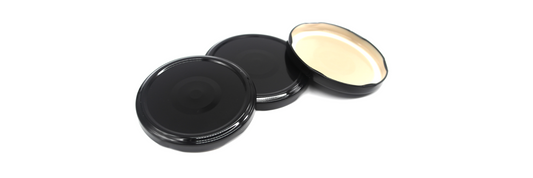Pickles have been a beloved snack and condiment across the world for centuries. Whether they're tangy, sweet, or spicy, pickles add an unmistakable burst of flavor to meals. This article explores various types of pickles, their origins, and the unique flavors they bring to the table. Additionally, we'll dive into the health benefits of pickles and answer some common questions surrounding this versatile food.
- Differences Between Fermented vs Pickled
- 7 reasons to choose glass jars for packing pickles
- What is the best packaging for pickles?
- What Is The Difference Between Chutney And Pickle?
Pickles Overview
What Are Pickles?
Pickles, also known as pickled cucumbers, are cucumbers that have been pickled in a salt or vinegar solution, along with other spices and herbs to create a distinctive sour, salty, and aromatic flavor. This pickling process not only helps preserve the cucumbers for a longer time, but also creates a unique, crunchy flavor that is suitable as a side dish for main dishes, sandwiches, or as a snack.
Pickles come in many different variations, such as dill pickles (using dill), spicy pickles, sweet pickles, and many others depending on the region and personal preference.
How Are Pickles Made?
The process of pickle-making involves preserving cucumbers or other vegetables in a brine solution, typically containing vinegar, water, salt, and various spices. The first step is selecting fresh cucumbers or vegetables, which are thoroughly cleaned to remove any dirt or debris. They are then soaked in the brine mixture, allowing the flavors to penetrate and the pickling process to begin.
Depending on the type of pickle, the fermentation time can range from a few hours to several weeks. Once the desired flavor is achieved, the pickles are sealed in jars to maintain their freshness and tanginess. Homemade pickles can also be made using traditional recipes passed down through generations, allowing for a personal touch and customization.
History of Pickles
Cucumber pickles has a long history and is considered one of the oldest methods of food preservation. Pickling cucumbers can be traced back over 4,000 years to Mesopotamia, where humans first began pickling vegetables to preserve them. From there, the practice spread throughout the world.
Cucumbers were cultivated around 2030 BC in India and Western Asia, and people used pickling to preserve cucumbers from very early times. The ancient Romans also enjoyed pickled cucumbers, often serving them at parties and in everyday meals. By the Middle Ages, pickled cucumbers had become a popular dish throughout Europe.
Pickles came to America with European immigrants, especially from Eastern Europe and Israel, where dill pickles became very popular. During the 19th century, pickles became an integral part of American culinary culture, especially in hamburgers and sandwiches.
Nowadays, pickled cucumbers are not only popular in Western countries but also loved all over the world, with many variations to suit local tastes and culinary cultures.
Different Types of Pickles
Dill Pickles
Dill pickles are arguably the most popular type of pickle, loved for their savory and tangy flavor. These pickles are made from cucumbers soaked in a brine solution that includes dill weed and garlic. The brine gives them their characteristic sour taste, while the dill weed and garlic impart a delightful aroma. Dill pickles are commonly enjoyed on sandwiches, burgers, or as a refreshing snack on a hot summer day.

Full Sour Pickles
If you prefer a pickle with an extra kick, full sour pickles are the way to go. These pickles have been left to ferment for a longer period, resulting in a tangy and intense flavor. The fermentation process involves lacto-fermentation, where natural bacteria present on the cucumber skins convert the sugars into lactic acid. Full sour pickles are excellent for those who crave a strong, briny taste that lingers on the palate.

Half Sour Pickles
Half sour pickles are a milder alternative to their full sour counterparts. As the name suggests, these pickles undergo a shorter fermentation period, resulting in a tangy yet slightly less intense flavor. This type of pickle strikes the perfect balance between crispiness and sourness, making them a popular choice among pickle enthusiasts. They are often served alongside deli sandwiches or enjoyed as a refreshing snack.

Sweet Pickles
For those with a sweet tooth, sweet pickles offer a delightful twist on the traditional dill pickle. These pickles are made by soaking cucumbers in a mixture of vinegar, sugar, and spices such as cinnamon and cloves. The result is a pickle with a sweet and tangy taste that pairs well with sandwiches and charcuterie boards. Sweet pickles are also commonly used in relishes and chutneys.
Salt Brine Pickles
Salty pickles are soaked in a salty brine solution for preservation, without the use of vinegar or fermentation.
- Zha cai: Chinese pickled cabbage, famous for its spicy flavor.
- Umeboshi: Japanese pickled plums, with a distinctive salty and sour taste, often served with white rice.
Bread and Butter Pickles
Bread and butter pickles are a classic choice that originated during the Great Depression era. These pickles are made with thinly sliced cucumbers, onions, and a brine that includes vinegar, sugar, and mustard seeds. The name "bread and butter" comes from the idea that these pickles were a staple during tough times when bread and butter were often the only food available. They are known for their sweet and tangy flavor and are often added to sandwiches and hamburgers.
Gherkins
Gherkins are small cucumbers that are pickled whole. They are typically harvested when young and have a crisp texture and tart flavor. Gherkins are often pickled in a brine of vinegar, sugar, and dill, similar to dill pickles. These bite-sized pickles are a popular addition to salads, cheese boards, and even martinis. Their small size makes them perfect for snacking or adding a crunchy element to various dishes.

Vinegar Pickles
Pickles are pickles that are soaked in vinegar. Vinegar helps to create an instant sour taste without the need for fermentation. This method is popular in many European and North American countries.
- Pickles: A popular pickle in North America, often eaten in sandwiches or sandwiches.
- Cornichons: a French variety of pickles, are similar to gherkins but have a slightly different flavor profile. These small, tart pickles are made from tiny cucumbers and are often pickled in a mixture of vinegar, water, and brine. Cornichons are a staple in charcuterie platters and are commonly enjoyed alongside cured meats and cheeses. Their tangy and vinegary taste adds a pop of flavor to any dish they accompany.
Pickled Peppers
Pickled peppers add a spicy and tangy kick to meals. These peppers, such as jalapenos or banana peppers, are pickled in a vinegar and brine mixture. The pickling process infuses the peppers with a sour and spicy flavor, making them a popular addition to sandwiches, pizzas, and nachos. Pickled peppers also add a vibrant and colorful element to any dish they garnish.

Specialty Pickles
Apart from the classic pickle varieties mentioned above, there is a wide range of specialty pickles available. These often include unique flavors and ingredients that elevate the pickle experience. Some examples of specialty pickles include horseradish pickles, kimchi pickles, and even pickled watermelon rinds. These inventive and eclectic pickles allow for endless experimentation and provide a surprising twist to traditional recipes.
Fermented Pickles
Fermented pickles are pickles that use a natural fermentation process to create flavor. Lactic acid bacteria naturally present in foods convert sugars into lactic acid, which helps preserve the food and creates a distinctive sour taste.
- Kimchi: A famous Korean fermented cabbage dish, fermented with spices such as chili, garlic and ginger.
- Sauerkraut: A German fermented cabbage dish, often served with sausages and meats.
Pickles in World Cuisine
North American Pickles
- Dill Pickles: Pickled cucumbers with dill, popular in the United States.
- Bread and Butter Pickles: Sweet pickles, often served with bread and cold cuts.
- Sweet Pickles: Sweet pickles, using sugar and spices.
Asian Pickles
- Kimchi (Korea): Pickled cabbage fermented with chili powder, a national dish of Korea.
- Tsukemono (Japan): Japanese pickled vegetables, from cucumbers to radishes, can be pickled in vinegar or salted.
- Achar (India): Strongly spiced pickles, made with mango, lemon or chili, with a variety of strong spices.

European Pickles
- Sauerkraut (Germany): Pickled cabbage, served with sausages and grilled meats.
- Cornichons (France): Small pickled cucumbers, often used in French dishes.
- Pickled Herring (Denmark): Pickled herring, often appearing at buffets in Northern Europe.

Middle Eastern & African Pickles
- Torshi (Iran): A mixture of pickled vegetables, served with main dishes.
- Mekhalel (Morocco): Pickled lemon melon, typical of North African cuisine.

Health Benefits of Pickles
Probiotics and Fermentation
Pickles that are fermented, like sour pickles or kimchi, are rich in probiotics, which can benefit gut health by promoting the growth of beneficial bacteria.
Low-Calorie Snack Option
Pickles are a low-calorie snack, making them a great option for those looking to watch their calorie intake while still enjoying a flavorful treat. They’re also a source of essential vitamins and minerals, such as vitamin K, which supports bone health.
Pickles and Hydration
The electrolytes found in pickles, especially sodium, can help maintain hydration, particularly for athletes who may lose electrolytes through sweat. Some athletes even drink pickle juice to prevent muscle cramps.
Pickles in Culinary Uses
Pickles in Sandwiches and Burgers
Pickles add a crunchy, tangy element to sandwiches and burgers. Dill pickles are commonly used in deli sandwiches, while sweet pickles pair nicely with richer meats like pulled pork or roast beef.
Pickles as Side Dishes
In many cuisines, pickles are served as a side dish to cut through the richness of the main meal. For example, Middle Eastern pickled turnips are often served with grilled meats, while Korean meals often include kimchi.
Using Pickles in Cooking
Pickles can be used as an ingredient in various recipes, such as potato salad, deviled eggs, or even as a topping on pizza. Additionally, pickle brine can be used to add flavor to marinades, salad dressings, or sauces.
FAQs Different Types of Pickles
Are Pickles Healthy?
Pickles are not only delicious but also bring many health benefits, especially fermented pickles. The fermentation process helps pickles contain many probiotics, which are beneficial for the digestive system. In addition, pickles provide many vitamins and minerals from the original ingredients. However, due to the high sodium content, consumers need to pay attention when eating pickles to avoid high blood pressure or salt-related health problems.
How to Use Pickles in Daily Menu?
Each type of pickle has its own culinary uses. Pickles are often served with sandwiches or burgers. Kimchi is an important ingredient in Korean soups, hot pots or mixed rice. Sauerkraut can be eaten with German sausages or added to salads. Japanese Tsukemono is used as a side dish or garnish for traditional meals.
What’s the Difference Between a Pickle and a Gherkin?
Gherkins are a type of small cucumber used to make pickles. While all gherkins are pickles, not all pickles are gherkins. The term "gherkin" is often used in Europe to refer to small pickled cucumbers.
How Long Do Homemade Pickles Last?
Homemade pickles can last for several weeks to months if stored in the refrigerator. Properly sealed and fermented pickles may last even longer.
Are All Pickles Fermented?
Not all pickles are fermented. Some pickles, like sour pickles and kimchi, undergo fermentation, while others are simply preserved in vinegar.
Conclusion
Pickles come in a variety of flavors, textures, and intensities, ensuring there is a pickle for every preference. From the classic dill pickle to the sweet and tangy bread and butter pickle, the world of pickles offers endless opportunities to add a burst of flavor to your meals. Whether you enjoy them on a sandwich, as a side dish, or as a standalone snack, pickles never fail to satisfy. So, the next time you take a bite of a crispy pickle, savor the complexity of flavors and appreciate the timeless art of pickling.









